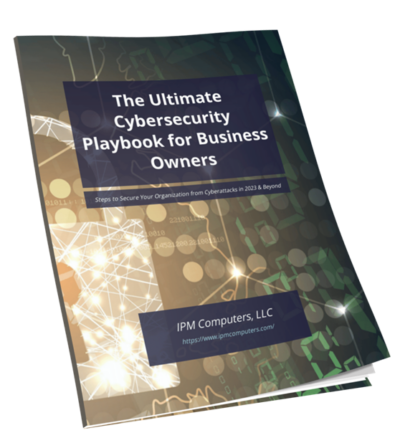The construction industry faces significant challenges due to its slow adoption of new technologies. Productivity growth has stagnated over the past few decades, highlighting how reliance on outdated tools and processes holds back progress. This technological lag not only limits efficiency but also increases costs and risks across projects.
Embracing technology in construction is essential for firms aiming to improve productivity, reduce errors, and stay competitive. Digital transformation can unlock new opportunities by streamlining operations and enhancing communication among teams.
Managed IT for construction and robust construction cybersecurity form the backbone of this transformation. Customized IT services help construction companies integrate modern software and hardware solutions while protecting sensitive project data from cyber threats. These components are critical for any firm seeking to modernize its workflows and secure long-term success.
The Current State of Technology in Construction
The construction industry has seen very little improvement in productivity over the last 25 years, with only a 5% increase during this time. This slow growth is mainly due to the industry’s heavy reliance on old technology and manual methods. Many companies still use outdated software and traditional tools that are not suitable for the complex demands of today’s projects.
Examples of Outdated Technology in Construction
Some common examples of this outdated technology include:
- Paper-based project documentation and blueprints
- Basic spreadsheets for budgeting and scheduling
- Standalone accounting systems without integration to other workflows
- Manual time tracking and payroll processes
These tools lead to inefficiencies, mistakes, and delays that add up throughout a project’s lifecycle. While some companies have started their digital transformation journey, the adoption of new technologies is still inconsistent across the industry. Early adopters are trying out construction management software, mobile apps, and cloud storage solutions. However, many others face difficulties in integrating these technologies due to concerns about costs, lack of technical expertise, or resistance from employees.
The Impact of Slow Adoption on Construction Projects
This slow acceptance of modern tools limits visibility into project status, equipment usage, and labor productivity. Without real-time data and automation, companies struggle to optimize resources or quickly address issues on-site. The current situation shows a construction industry still stuck in old practices, even though there is clear evidence that technology can bring significant improvements in productivity and profitability.
Key Challenges Hindering Technological Progress
The construction industry faces several critical obstacles that stall its technological advancement. These challenges not only slow down modernization but also impact productivity and project outcomes.
1. Cybersecurity Risks
Cybersecurity risks pose a significant threat. Construction projects often involve sensitive data, from architectural designs to client information. Vulnerabilities in outdated systems make firms easy targets for cyberattacks, leading to financial losses and compromised project integrity. Robust protection measures are essential but frequently overlooked, leaving companies exposed.
2. Employee Adoption Issues
Employee adoption issues represent another major barrier. Construction workers and management may resist new technologies due to unfamiliarity, fear of change, or lack of proper training. This resistance slows progress and reduces the return on investment in digital tools. Without effective change management strategies, technology remains underutilized.
3. Poor Communication
Poor communication results from insufficient digital collaboration tools. Many firms still rely on traditional methods such as phone calls, emails, or paper documentation. This leads to misunderstandings, misaligned schedules, and delayed decision-making. Communication breakdowns increase project risks and can cause costly rework.
4. Project Management Inefficiencies
Project management inefficiencies stem largely from manual processes and fragmented workflows. Tracking resources, timelines, and costs on spreadsheets or paper forms increases errors and wastes time. These outdated practices raise operational costs and lower team morale as employees struggle with redundant tasks rather than focusing on value-added activities.
Addressing these challenges is crucial to unlocking the potential benefits of modern construction technology.
Emerging Technologies Transforming Construction
Construction firms are beginning to leverage several modern technologies that address longstanding inefficiencies and elevate project outcomes. Among these, cloud-based asset management systems stand out for their ability to provide real-time visibility into equipment and materials.
By hosting data in the cloud, teams across multiple sites can instantly access up-to-date information on inventory levels, asset locations, and usage history. This enhanced transparency improves coordination and reduces costly errors caused by misplaced or unavailable resources.
Cloud Solutions with Barcode and GPS Tracking
Barcode tracking and GPS tracking complement cloud solutions by offering precise monitoring capabilities throughout a project’s lifecycle:
- Barcode tracking tags individual tools and materials with scannable codes, allowing quick identification during check-in/check-out processes. This minimizes losses and supports accurate billing.
- GPS tracking enables continuous location monitoring of vehicles and heavy machinery on-site or in transit. It helps optimize asset deployment, prevent theft, and improve scheduling efficiency.
Automated Maintenance Scheduling
Automated maintenance scheduling represents another emerging technology gaining traction. Instead of relying on reactive repairs or manual reminders, construction companies use software platforms that track equipment usage hours and condition metrics to trigger timely service alerts. This proactive approach reduces unexpected downtime, lowers repair costs, and extends asset lifespan.
The Role of Managed IT for Construction
Integrating these technologies often requires specialized support. This is where Managed IT for construction plays a vital role. Managed service providers tailor solutions to the unique environment of construction firms, ensuring seamless connectivity between cloud platforms, tracking devices, and maintenance systems. They also handle security protocols and user training to maximize adoption and minimize disruption.
These innovations enhance operational control by streamlining workflows related to asset management, equipment monitoring, and preventive upkeep (areas traditionally bogged down by manual efforts and fragmented communication channels).
Advanced Innovations Enhancing Efficiency and Safety
Construction firms are beginning to adopt cutting-edge technologies that significantly improve both efficiency and worker safety on job sites. These innovations address long-standing challenges in accuracy, resource management, and hazard prevention.
1. Augmented Reality (AR) Construction
AR technology overlays digital information onto the physical environment, allowing project managers and workers to visualize building plans in 3D before and during construction. This capability reduces errors by improving planning accuracy, enabling teams to identify potential issues early and adjust designs or workflows accordingly. AR headsets or mobile devices help walkthroughs with precise spatial data, cutting down costly rework caused by misinterpretations of blueprints.
2. Machine Learning Optimization
Machine learning algorithms analyze vast amounts of project data, such as equipment usage, labor hours, weather patterns, and supply chain timelines to optimize operations. By identifying patterns that humans might miss, these systems help allocate resources more efficiently, forecast delays, and streamline scheduling. This optimization reduces downtime while ensuring projects stay on budget and meet deadlines.
3. Smart Personal Protective Equipment (PPE)
Wearable smart PPE integrates sensors that monitor vital signs, detect hazardous gas levels, track location, and even assess fatigue in real time. This data is invaluable for preventing accidents by alerting workers and supervisors to unsafe conditions immediately. Smart helmets, vests, and gloves enhance compliance with safety regulations while empowering workers to maintain situational awareness.
4. Drones for Site Monitoring
The use of drones has expanded rapidly across construction sites for surveillance, asset tracking, and progress documentation. Equipped with high-resolution cameras and GPS technology, drones provide comprehensive site imagery from multiple angles quickly and safely. They help identify security risks, monitor material deliveries, verify work completed versus plans, and create detailed records without the need for extensive manual inspections.
These advanced innovations demonstrate how integrating technology into daily construction processes can elevate productivity while protecting workforce wellbeing. Embracing augmented reality construction tools alongside machine learning optimization creates smarter project management. At the same time, smart PPE combined with drones for site monitoring ensures enhanced safety standards are maintained consistently across projects.
The Role of Managed IT Services in Construction Modernization
Construction firms face unique challenges with their technology infrastructure that generic IT support cannot adequately address. Managed IT for construction firms offers specialized hardware/software support tailored specifically to industry needs, streamlining the digital transformation journey.
Key benefits include:
- Custom Solutions: Managed IT providers understand the demanding environments of construction sites and provide rugged hardware options and software optimized for project management, design, and compliance.
- Integration Expertise: Seamless integration between legacy systems and new technologies reduces disruptions during upgrades or transitions.
- Cybersecurity Focus: Protection against targeted threats common in construction, such as ransomware attacks on project data or theft of sensitive client information.
- Scalable Support: Flexible IT services accommodate fluctuating workforce sizes and temporary project sites without sacrificing performance or reliability.
These elements ensure construction companies maintain operational continuity while upgrading their tech stack. This focused approach enables firms to leverage emerging tools effectively without being bogged down by hardware failures or incompatible software.
Benefits of Partnering with Managed IT Providers for Construction Firms
Managed IT for construction delivers improved workflow collaboration through managed IT solutions tailored to the industry’s unique demands. Construction projects often span multiple sites, requiring seamless communication and coordination among teams, subcontractors, and suppliers. Managed IT services enable:
- Real-time data sharing: Cloud platforms and mobile applications supported by managed IT providers allow instant access to project updates, blueprints, schedules, and inventory status regardless of location.
- Centralized document control: Ensures all stakeholders work from the latest files, minimizing errors caused by outdated information.
- Integrated communication tools: Video conferencing, messaging apps, and task management software reduce delays caused by fragmented communication channels.
- Reduced downtime: Proactive IT maintenance prevents system outages that could stall project progress.
Construction managed IT services bring a structured technology environment that supports collaboration on-site and off-site. This level of connectivity boosts efficiency, accelerates decision-making, and helps keep projects on schedule despite complex logistics and dispersed teams.
Overcoming Resistance to Technology Adoption: Strategies for Success in Construction Firms
Resistance to new technology is a common hurdle in construction firms. Employee training construction tech adoption challenges often stem from unfamiliarity, fear of change, and perceived complexity. Addressing these issues requires well-planned strategies that promote confidence and competence at every organizational level.
Key strategies include:
- Tailored Training Programs: Design sessions based on skill levels and roles. Field workers need practical, hands-on demonstrations, while managers benefit from understanding data analytics and software interfaces.
- Incremental Learning: Break down technology adoption into manageable phases. Introduce one tool or system at a time to prevent overwhelm and reinforce mastery before moving forward.
- Peer Mentorship: Encourage experienced users to support colleagues. Peer-to-peer guidance builds trust and creates a collaborative learning environment.
- Clear Communication of Benefits: Explain how technology improves daily tasks—reducing errors, saving time, and enhancing safety. When employees see tangible advantages, motivation to adopt increases.
- Ongoing Support: Provide accessible resources such as help desks, FAQs, and refresher courses. Continuous assistance ensures issues don’t stall progress or breed frustration.
“Employees are more likely to embrace technology when they feel supported rather than pressured.”
Training programs that integrate these methods help construction firms overcome skepticism and accelerate tech adoption. This foundation sets the stage for smoother transitions into digital workflows and improved project outcomes.
Why Embracing Modernization is Crucial for Survival in the Competitive Construction Industry Landscape?
The construction industry faces intense competitive pressures faced by traditional players who resist change. Firms that delay or ignore digital transformation risk significant setbacks, including:
- Loss of business opportunities: Clients increasingly demand faster project delivery, transparency, and real-time updates. Companies lacking modern technology struggle to meet these expectations.
- Reduced operational efficiency: Manual processes and outdated tools lengthen project timelines, inflate costs, and decrease profit margins.
- Inability to scale and adapt: Digital tools enable firms to manage multiple projects seamlessly and respond quickly to market shifts. Without modernization, scaling operations becomes difficult.
- Weakened client relationships: Transparency and communication powered by technology build trust. In their absence, misunderstandings and dissatisfaction grow.
Construction companies embracing digital tools gain a competitive edge by improving accuracy, speeding up workflows, and enhancing collaboration across teams and sites. The industry’s evolving demands require more than traditional methods; they demand agility and innovation.
Ignoring these shifts does not just mean falling behind; it means risking survival in an industry where clients favor adaptable, tech-savvy partners who deliver value efficiently and reliably.
Conclusion: Leveraging Technology to Adapt & Evolve
The construction industry is at a crucial point where adopting technology is no longer optional but essential. Companies that decide to modernize risk falling behind competitors who use digital tools for improved efficiency, safety, and collaboration.
Managed IT for construction provides customized solutions that tackle specific industry challenges, such as cybersecurity threats and outdated processes.
Consider the benefits when you modernize your construction firm with managed IT solutions consultation from IPM:
- Streamlined project management through real-time data access
- Improved communication across dispersed teams
- Enhanced equipment tracking and maintenance scheduling
- Stronger cybersecurity defenses protecting critical assets
When you choose IPM as your partner for managed IT services, you empower your business to stay flexible, cut costs, and better meet client demands. This proactive approach changes the way you build, ensuring a more productive, competitive future in a constantly changing marketplace.






